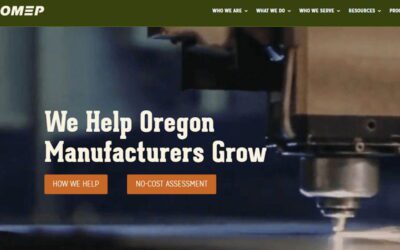

This is a guest blog post by our valued sponsors at Schwabe Williamson and Wyatt. Jeff Eden and Katie Kelly are attorneys for Schwabe, Williamson and Wyatt. They can be reached at jeden@schwabe.com or kkelly@schwabe.com.
It’s Monday morning and you receive a call from a distressed sales associate. Several customers have called to complain that your newest product, a widget, broke after several uses. Ten minutes later, a distributor calls to report the same problem. The widget has been a runaway success for your company — you’ve sold 10,000 units in the past six months, which has generated $10 million in revenue for the company. Panic sets in. Now what?
This scenario is too often a reality for modern manufacturers. Frequently, the best way for companies to protect their customers while minimizing risk to the company is initiating a product recall. Product recalls are on the rise in the U.S. In 2015, almost three times more vehicles were recalled than were sold, according to a May 2016 article in The New York Times, “Product Recalls Rise With Better Detection and Fewer Suppliers.” Other industries have also seen this trend. Indeed, food recalls have doubled since 2002, according to the article.
To understate the obvious, product recalls are expensive. Aside from the expected costs, namely product inspection, repair, replacement, and disposal, there are additional considerations that drive up the price of a product recall. Personnel must be reassigned from their regular duties to assist with recall logistics. Sales may drop as a result of falling consumer confidence, particularly if the recall is not implemented quickly and effectively. The company might also be named as a defendant in a lawsuit. Upon learning of a product defect, there are a number of steps manufacturers can take to mitigate both the apparent and less-apparent costs of a recall:
Verify the Defect
The first (and perhaps most important) step in any recall is to verify the existence of a defect. For example, perhaps an apparent defect is actually the result of tampering. In that instance, there may be an item-specific problem and no need for a recall. Initiating a recall prematurely can force the company to incur unnecessary costs and needlessly face reputational injury. A premature recall might also encourage potential plaintiffs to sue over non-existent defects. If a defect does exist, however, the company should initiate the recall quickly. Indeed, the company could face legal exposure by failing to recall the defective product.
Regulatory Recalls
Certain industry recalls are regulated by federal agencies. Significantly, consumer product recalls are regulated by the U.S. Consumer Product Safety Commission (CPSC) and automotive product recalls are regulated by the National Highway Traffic Safety Administration (NHTSA). These agencies have specific recall requirements that should be consulted immediately when a protect defect is discovered. Failure to comply with regulatory requirements can expose an organization to civil, or even criminal, penalties.
Identify the Scope of the Defect
If a defect exists, identifying the defective aspect of the product, or conditions that trigger the defect, may reduce the burden of the recall. For example, assume the widget company started using rubber caps on its widgets one month ago. The rubber caps have a tendency to crack at high temperatures. If the company determines that the rubber caps are the source of the defect, only widgets manufactured in the past month would be subject to recall. Or, if the rubber caps were used in a certain model number, only widgets bearing that model number would need to be recalled. By specifically identifying the defective aspect of the product, the widget company can narrow the universe of products that might be defective, thereby lessening the burden of the recall.
Determine the Appropriate Response
Each recall should be tailored to the defect. There are several types of recall that may be appropriate under different circumstances:
- Product Return This type of recall asks that customers return a certain product or specific subset of products (i.e., a certain model number.) This option is generally the most expensive, but is often necessary when the defect is not easily fixe d or is the result of a system failure.
- Repair If the defect can be easily fixed, the company can ask customers to return the product for repair. For larger or less mobile items, the company may perform the necessary repairs at the customer’s site.
- Notification In some instances, the most effective response may be notifying customers or end-users of the potential defect. This option might be particularly effective if the problem occurs under specific conditions (i.e., extreme temperatures) or when the product is improperly used.
Notify Your Insurer
Before initiating a recall, contact your insurer to determine what coverage your insurance policy provides. Costs associated with product recall are often excluded from comprehensive general liability policies. As such, it may be advisable to purchase recall insurance that covers recall-associated expenses, including hiring additional employees, advertising, and costs associated with inspecting, repairing, and replacing defective products.
Communicate with Customers and Other Stakeholders
It is important to notify all key stakeholders about the recall, including customers, end-users, employees, outside sales associates, and distributors. The company should also consider whether or not it should notify its shareholders, particularly if the recall could result in an adverse change in its financial position. Communications should inform all stakeholders of the products involved in the recall, what risks are posed by the defective products, and how to participate in the recall process. All messaging should be consistent – confusion about the defect will hurt consumer confidence.
While following these steps will help a recall go smoothly, the best way for companies to effectively navigate recalls is by having a rehearsed recall plan in place. The plan should be designed to protect customers while minimizing risk for the company. More specifically, the plan should identify certain employees to serve on the recall team and assign responsibilities during the recall. The plan should also allocate costs for potential recalls, as well as outline a communication strategy. Once the plan is in place, a practice recall can fine-tune the plan.
In addition to having a recall plan, companies can prepare for future recalls by reviewing contracts with customers and suppliers to determine how recall costs will be allocated. Companies can also prepare for product recalls by improving their tracking systems, so defective products can be easily located and end-users notified. It is impossible to entirely eliminate mistakes from the manufacturing process, but having well-developed policies and procedures will mitigate the disruption caused by product recalls.
Jeff Eden and Katie Kelly are attorneys for Schwabe, Williamson and Wyatt. They can be reached at jeden@schwabe.com or kkelly@schwabe.com



